Research on Antiques & Collectibles

Research on Antiques & Collectibles |
|
|||
|
|
||||||

PORCELAIN ENGRAVINGS OF CANON BUSCH
From the Hieroglyphics on stone of the ancient Egyptians to the illustrations on today's printed pages, engraving has taken many forms. It is familiar not only as a means of reproducing pictures, but also as surface decoration on wood or stone, glass, silver, and other materials. As an embellishment for porcelain, however, it is extremely unusual. Apparently the first European to practice engraving on porcelain, and almost the only one, was August Otto Ernst von dem Busch, canon of the Holy Cross Seminary in Hildesheim, Germany. He was born in Hildesheim, the son of a court councilor to the prince, on April 7, 1704, and died in his native city.... See Full Article
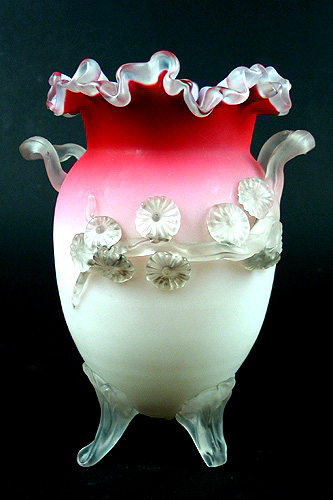
19thC ANTIQUE OPAQUE GLASS
During the seventeenth and eighteenth Centuries there were many attempts to reproduce in Europe the Chinese porcelain which was then so popular and profitable an import, and the products of these porcelain manufactories are familiar to most lovers of antiques. Far less familiar are the attempts to counterfeit porcelain by the use of opaque white glass with brilliant enameled decoration. Regarded as something of a hybrid, this material has been misunderstood alike by those who find the supreme beauty of glass in the freezing to crystalline immobility of a molten substance in the moment of manipulation, and by those to whom .... See Full Article
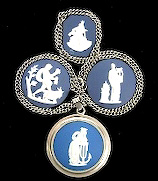
WEDGWOOD POTTERY PORTRAITS & CAMEOS: Relief Art on Porcelain and other Ceramic Media – the predecessor of Jasperware
In 1774, Wedgwood wrote the following in his catalogue: "We beg leave in this place to observe that if gentlemen or ladies choose to have models of themselves, families, or friends made in wax or engraved in stones of proper size for seals, rings, lockets, or bracelets, they may have as many endurable copies of these models as they please, either in cameo or intaglio, for any of the above.... See Full Article
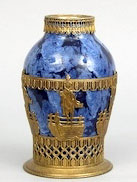
ANTIQUE CERAMICS & GLASS IN WILLIAMSBURG, PENNSYLVANIA
Of the various types of eighteenth-century material that have been unearthed in excavations at Williamsburg, ceramics are the least susceptible to decomposition. Thus the fragments found have been tremendously helpful in establishing what wares were actually used there, quite aside from the supporting evidence of contemporary records. The Palace inventories are less illuminating - we find, for example, quantities of quite unidentified "dishes" - but many of its references may be.... See Full Article
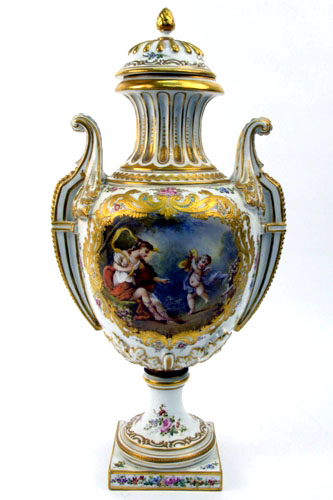
18th CENTURY FRENCH SOFT-PASTE PORCELAIN – SEVRES - VINCENNES
American Public and private collections of eighteenth-century French soft-paste porcelains are far from common. Even during their own period the difficulties and cost of manufacture marked them as luxury items, intended for a small circle of enthusiasts. For those pieces which have survived, competition among collectors has long been brisk. One of the finest collections to be found in this country is in the Wadsworth Atheneum, Hartford's Art Museum. For students and.... See Full Article
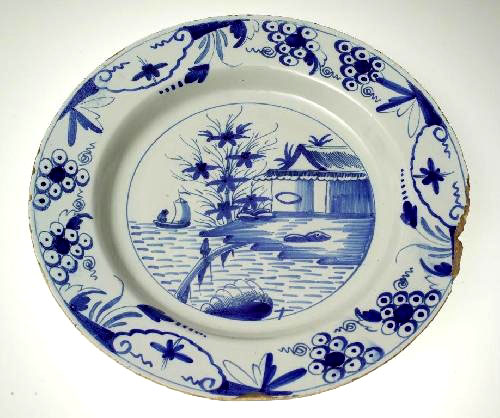
ENGLISH DELFTWARE (BLUE & WHITE) POTTERY
The knowledge of tin-enamel glazes was brought to Europe by the Moors in the twelfth century. Its immediate adoption upon its introduction to Spain and Italy, and thence to France, the Netherlands, and England, is understandable when one considers that it made possible the use of painted decoration of an intricacy and variety of color which could not be achieved by the earlier slip, lead-glaze, and relief methods. According to the most recent studies, tin-enameled wares were first made in England by two Antwerp potters, Jaspar Andries and Jacob Janson, about.... See Full Article
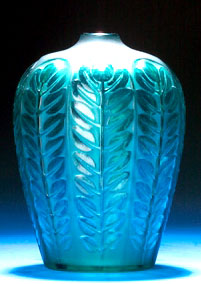
ANTIQUE SOFT-PASTE PORCELAIN OF TOURNAI
Though it is not French, Tournai porcelain is very close to French soft-paste, possessing the same charm and elegance. Since 1830 Belgian, the town of Tournai, on the banks of the Scheldt, belonged to the southern part of the Low Countries at the time when they were under Austrian rule. Prior to the establishment of a porcelain factory there, Tournai was known chiefly for its tapestries, its goldsmiths' art, and its cathedral. Early in 1750 Francois Carpentier started a pottery factory in Tournai with the financial help of the town. Less than a year later, he felt obliged to sell his establishment to Francois-Joseph Peterinck, who was born in Lille in 1719 and had.... See Full Article

AMERICAN HISTORY ON STAFFORDSHIRE AND LIVERPOOL POTTERY
The loss of the American Colonies was a great blow to England, but the Revolutionary War did not destroy the bonds of common origin, language, and mutual interests between the two countries. For a time no manifest or other shipping document was required for any American vessel entering or clearing British ports, and trade was carried on without restrictions. The ingenious potters of Liverpool, with tradesman-like foresight, began to turn out jugs, bowls, mugs, and other.... See Full Article
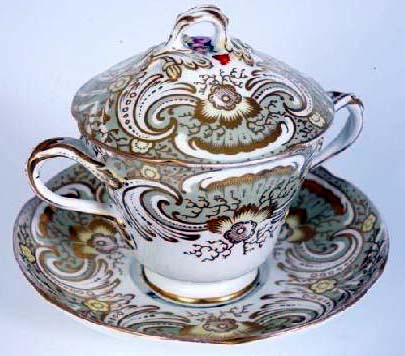
SAMUEL ALCOCK POTTERY, STAFFORDSHIRE, UK
It was Doctor Johnson who said that history may be based on permanent monuments and records, but that lives can be written only from personal knowledge, which tends to grow less and less every day and shortly is lost forever. And let it be remembered that circumstantial evidence, upon which the historian may be obliged to rely when personal knowledge and records are lacking, may prove a false guide. Samuel Alcock's life story depends for its reconstruction largely on remembrances of relatives and friends. Active in such a group have been a grandson, Doctor S. King Alcock, and Alfred Meigh. But recollections are not the only testimonials to Alcock's.... See Full Article
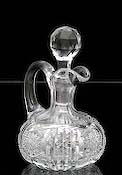
CAMBRIDGE AND LIBBEY GLASS (NEW ENGLAND GLASS COMPANY)
To speak of the “development" of American glass as though it were a gradual climb from primitive to aesthetic values is scarcely accurate. Glass progresses or declines in design and fabric in direct relation to the tastes, habits, and purses of the people with whom it enjoys a common environment. This is clearly seen in the products of the New England Glass Company of Cambridge, Massachusetts, for this glass works kept close pace with the trends and tastes of American society in the nineteenth century.... See Full Article

CHINOISERIE ON PORCELAIN AND OTHER ANTIQUES
There is no word in English for chinoiserie. We define it as a type of decoration which had its greatest vogue in the eighteenth century and which was described by contemporaries as being "in the Chinese taste;" we also apply the word to articles made in that style. But no single word or phrase in the language evokes as well as chinoiserie that fantastic world of which our cover this month affords a glimpse. China has always pulled at the imagination of Westerners. For long ages, caravans made their slow and painful way across central Asia to bring back rich and wonderful cargoes. Before the middle of the seventeenth century.... See Full Article
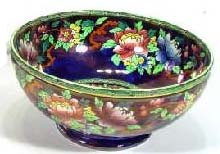
CHINOISERIE ON GLASS
In comparison to porcelain, furniture, fabrics, bronze, and silver, glass was almost unaffected by the European vogue for the Chinese-influenced decoration which we call chinoiserie. China made glass and China decorated glass. Chinese artisans have worked in this medium for many centuries, at least since the late Chou period ending in 255 BC In Chinese glass, however, form and texture assumed major importance. Decoration, when used, was principally sculptural in character, consisting of carving in natural forms to produce either .... See Full Article
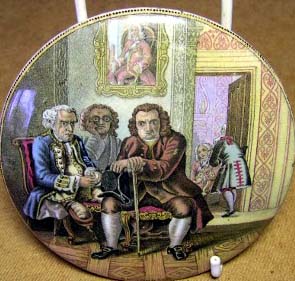
STAFFORDSHIRE POTTERY POTLIDS AND PRATT’S COLOR PRINTS
About thirty years ago it was the fashion to collect china potlids. They were the covers of ointment or salve boxes, beautifully decorated with color prints which were not only attractive but important, for they were examples of the first color printing on ceramics. The technique followed closely on the heels of the color work of George Baxter and his associates, who had developed the process of printing with oil colors on paper. We now know that this color process on pottery was not confined.... See Full Article
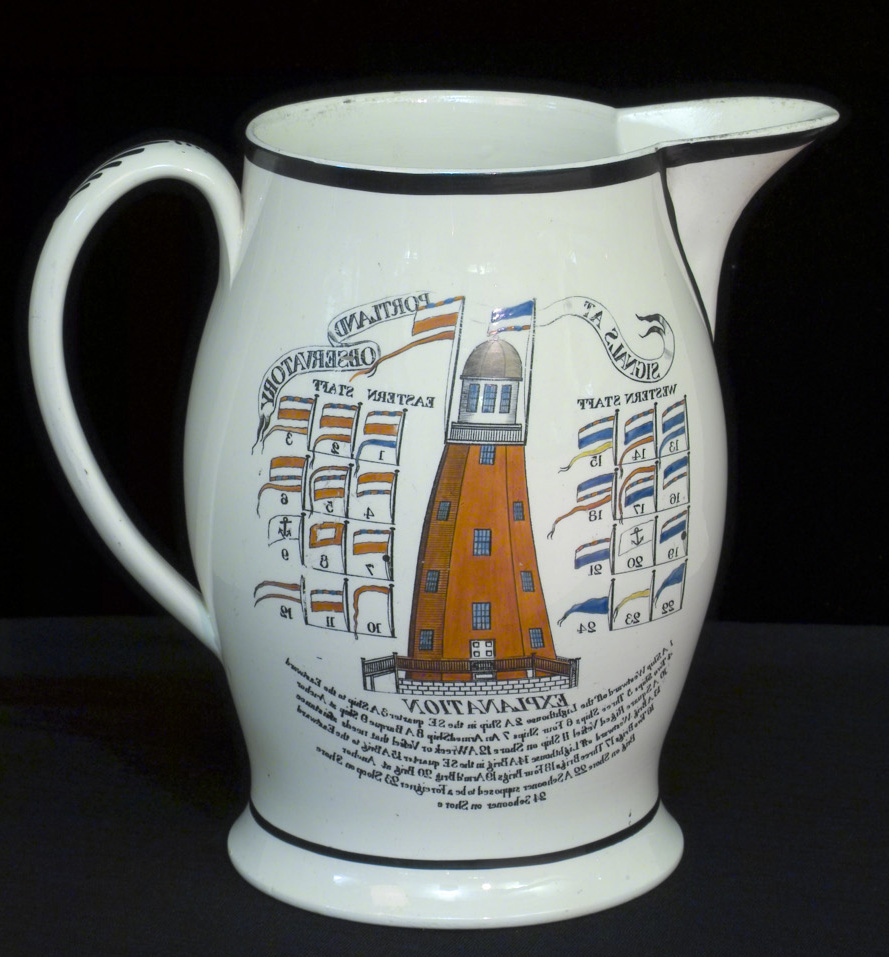
ANTIQUE ENAMELED STAFFORDSHIRE POTTERY
Most of the old English enamels popularly known as Battersea were in fact made in the Midlands of England between about 1750 and 1775. As a rule, the omnibus term "South Staffordshire" is used to describe these enamels, although they were made not only in the towns of Bilston and Wednesday in South Staffordshire but also in Birmingham. The reason for this general term is the close family likeness that exists among all the enamels made in Staffordshire. Even though a number of different painters or schools of painters can be recognized, displaying varying degrees of technical and artistic competence, the subjects chosen.... See Full Article
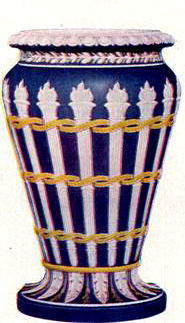
18th CENTURY ENAMELED POTTERY FROM BIRMINGHAM, LIVERPOOL AND INDEPENDENT DECORATORS
Though it is usually easy to decide whether an enameled object was made at Battersea or in South Staffordshire, it is difficult to attribute a piece which does not fit into either of these categories to one of the other possible sources. The extent of the problem will be realized when it is recalled that the Sadler factory at Liverpool and the smaller independent decorators purchased the boxes, plaques, and other forms that they used, ready made with a white enamel ground applied to them. Their... See Full Article
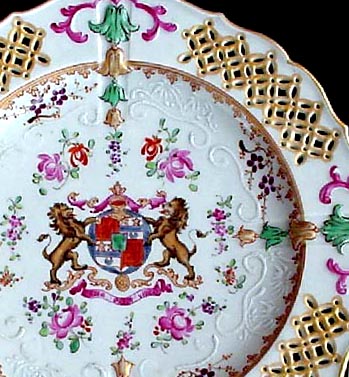
COLLECTING ARMORIAL PORCELAIN
Towards the end of the seventeenth century a vogue was started by prominent families in England and on the Continent for export porcelain dinner services decorated with their coats of arms. This demand grew until it reached a peak in the latter part of the eighteenth century and terminated abruptly shortly after the start of the nineteenth. Armorial services were often very large, sometimes running to five hundred pieces; the invoice for the Peers service in the British Museum specified 524 pieces. Orders for these sets were given to representatives of.... See Full Article